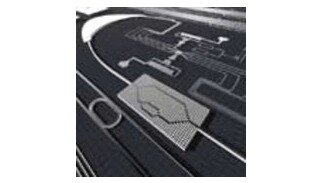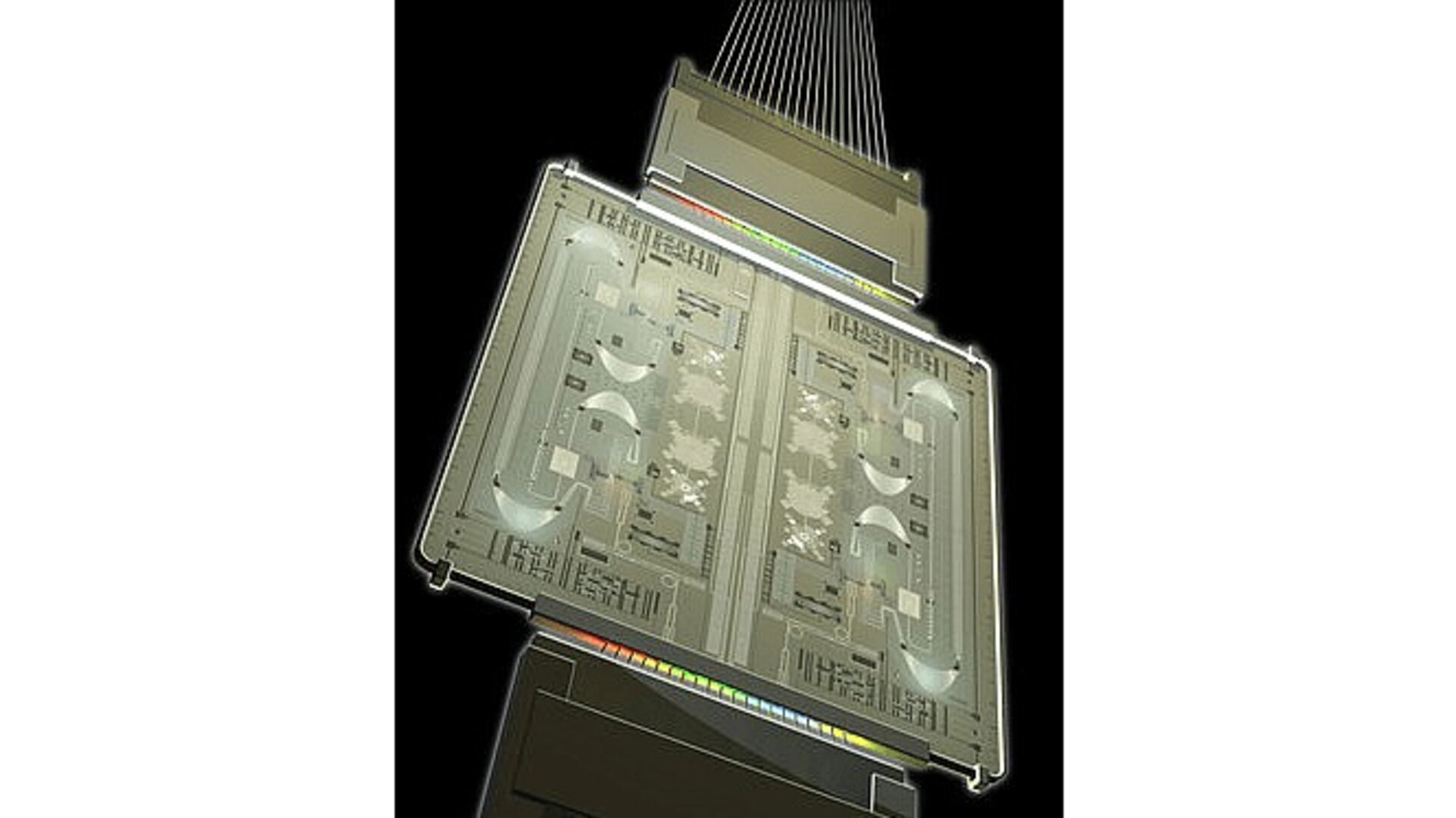Data handling at the speed of light
An ESA study could help bring about a new era in the way computing is performed. Instead of electrical circuits, microscopic beams of light will carry information. This will make spacecraft smaller and more efficient than ever before. Also, it will eventually allow everyday computing devices of extraordinary power to fit onto single microchips.
There was a time when computers filled entire rooms, now single electronic microchips with vastly more computing power than their colossal ancestors sit on most desks across Europe. Yet a newer age of miniaturisation may be at hand thanks to microphotonics.
Photonics uses light, rather than traditional electrical currents, to carry and manipulate information. Microphotonics takes this a stage further by shrinking the photonic components so that they can be placed onto microchips.
A recently completed ESA study, funded by the General Studies Programme, aimed to push this miniaturisation smaller than ever before. The study's manager, Iain McKenzie says, "We are on the verge of a revolution in what we can do with light. With this study we wanted to see just how much we could put onto a single chip."
However, as microphotonics is such a new discipline it is not yet clear which is the best way forward. Professor Roel Bates, Ghent University – IMEC, says, "There are many different possible approaches in microphotonics."
To address this, ESA undertook two parallel industrial studies. The first, performed by IMEC, looked at integrating so-called active and passive photonic functions onto a single chip. Examples of active functions are the generation of light and its modulation. Passive functions are things like channelling light around and splitting it along different paths. Active functions perform better than passive ones in certain substances and vice-versa, so the study looked at how best to place both functions on a single chip.

The second study, performed by MPB Communications, took a 'toolbox' approach. They defined a number of microphotonic components, each of which was capable of performing a basic task, and then designed them so that they could be picked off the shelf and assembled onto a single chip to form various components.
"The more functions we can get onto a chip, the less power it needs and the less massive the overall system is going to be," says McKenzie. This could make spacecraft more efficient than ever because, by reducing the mass and power requirements, they can become smaller and less costly to launch.
An added bonus is that being optical rather than electronic, microphotonic systems may be immune to the debilitating electrical effects of space weather.
McKenzie sees microphotonics initially playing a leading role in the instrumentation of future space missions. For example, they are being studied for possible inclusion on Darwin, the mission that will consist of a number of space telescopes, all working together to look for Earth-sized worlds around other stars. "Darwin could use an integrated microphotonics device to combine the light from its telescopes," says McKenzie. Darwin is planned for launch sometime after 2015.
However, there is still along way to go because miniaturization poses challenges for actually making these devices. The smaller the light channels become, the greater the risk of them 'spilling' their precious information. Also, it is not yet clear how to efficiently interface a microphotonics device with more traditional microelectronics. These aspects must be studied more.
If all goes well, McKenzie believes that microphotonics could form the basis of sophisticated sensors to monitor planetary environments from orbiting spacecraft or even to sit in human habitats on future space missions to the Moon and Mars, checking the atmosphere.


